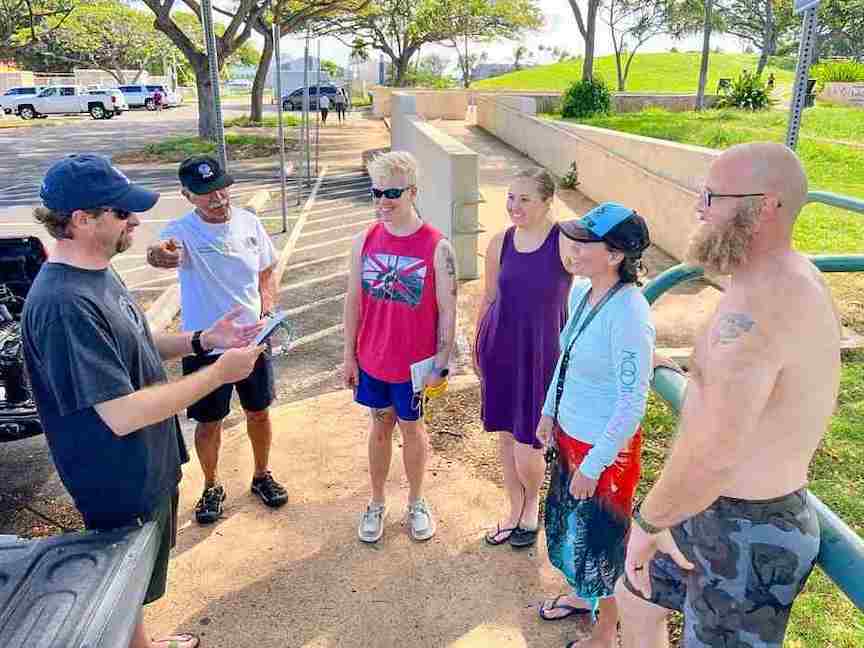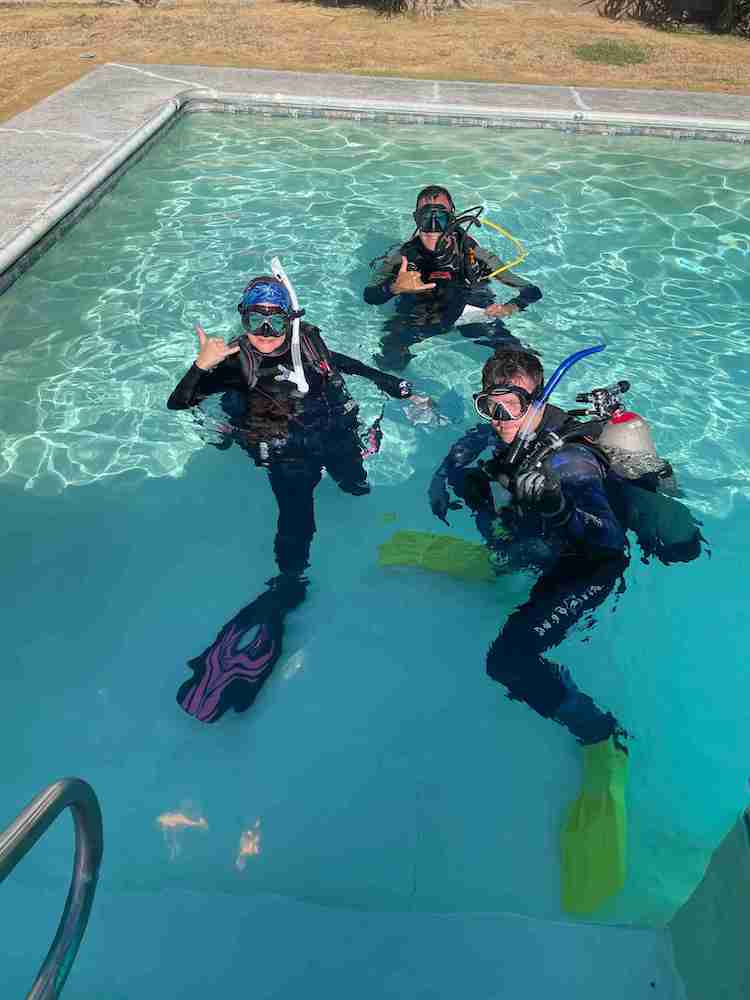




A conversation with Course Director Larry Grayson about PADI Multi-Level Scuba Diving Training
Firstly, what is multi-level training?
- Multilevel training is where we take candidates from various levels of training and put them in a situation in the classroom, pool and ocean and let them work together as a team.
- This can look like:
- An Open Water Scuba Instructor training an Open Water student with Divemaster Candidate (DM in training) and an Assistant Instructor Candidate (AI in training)
- A Course Director training an IDC Staff Candidate with an IDC Candidate and a Rescue student
- An MSDT training an Advance Open Water student with a Divemaster Candidate and a deep diver specialty
What benefit does it (multi-level training) offer?
- It allows people to see higher levels of training. It allows them to partake in that training as a student, role-playing so they can see what the future (education, teaching) requirements are if they decide to move up in their profession or recreational training.
What disadvantages does it (multi-level training) offer?
That is a hard one – there aren’t any obvious disadvantages in my opinion.
Someone may feel slightly pressured to move up or in their training when they are not psychologically ready to do more advanced training.
A less experienced or less organized instructor/leader could potentially make the multi-level training feel disorganized or overwhelming – which would be a great disservice to this training tool.
When is multi-level training best used?
- It is best used during open water training because they (ideally professional level students/candidates – DM, AI, OWSI, IDC Staff) get a real-world situation to better aid them learning the skills and techniques which will be necessary in their professional scuba diving career(s).
Do you have any memorable multi-level training stories to share?
- A diver candidate undergoing the first level of professional diving certification, Divemaster, participated in multi-level training as a DMC. She posed as an Open Water student for an Open Water Scuba Instructor Candidate’s training and was motivated to continue her education to become an OWSI herself! Previously, the diver had only intended to become a Divemaster. Today, she currently works as a PADI Open Water Scuba Instructor on Oahu.
Where were you (Course Director Larry Grayson) first exposed to multi-level training?
- In 1990 in Okinawa Japan. Military folks provided multi-level training at shore dives and in pool sessions.
Does PADI have any restrictions or reservations about multi-level training?
- The only restriction is ratios. Ratios have to be 8 to 1
Should multi-level training only be conducted by a course director?
- No, I personally feel that multi-level training can and should be conducted by OWSI, MSDT, IDC Staff and course directors. There are many benefits for every level of scuba trainer. Firstly, efficiency. Secondarily, it can give students a bigger sense of community and connection to the scuba world. For Open Water students it can give them a dive buddy – maybe their first one! It also gives students something to look forward to. Multi-level training gives students a first-hand look at higher levels of training.
What do you want to tell people about multi-level training?
It is FUN!
It motivates people to move forward in their professional training.
It gives a student or a professional candidate a look at what it’s like to work at a real dive shop. On a boat as a professional, you could have multiple trainings occurring at the same time.
